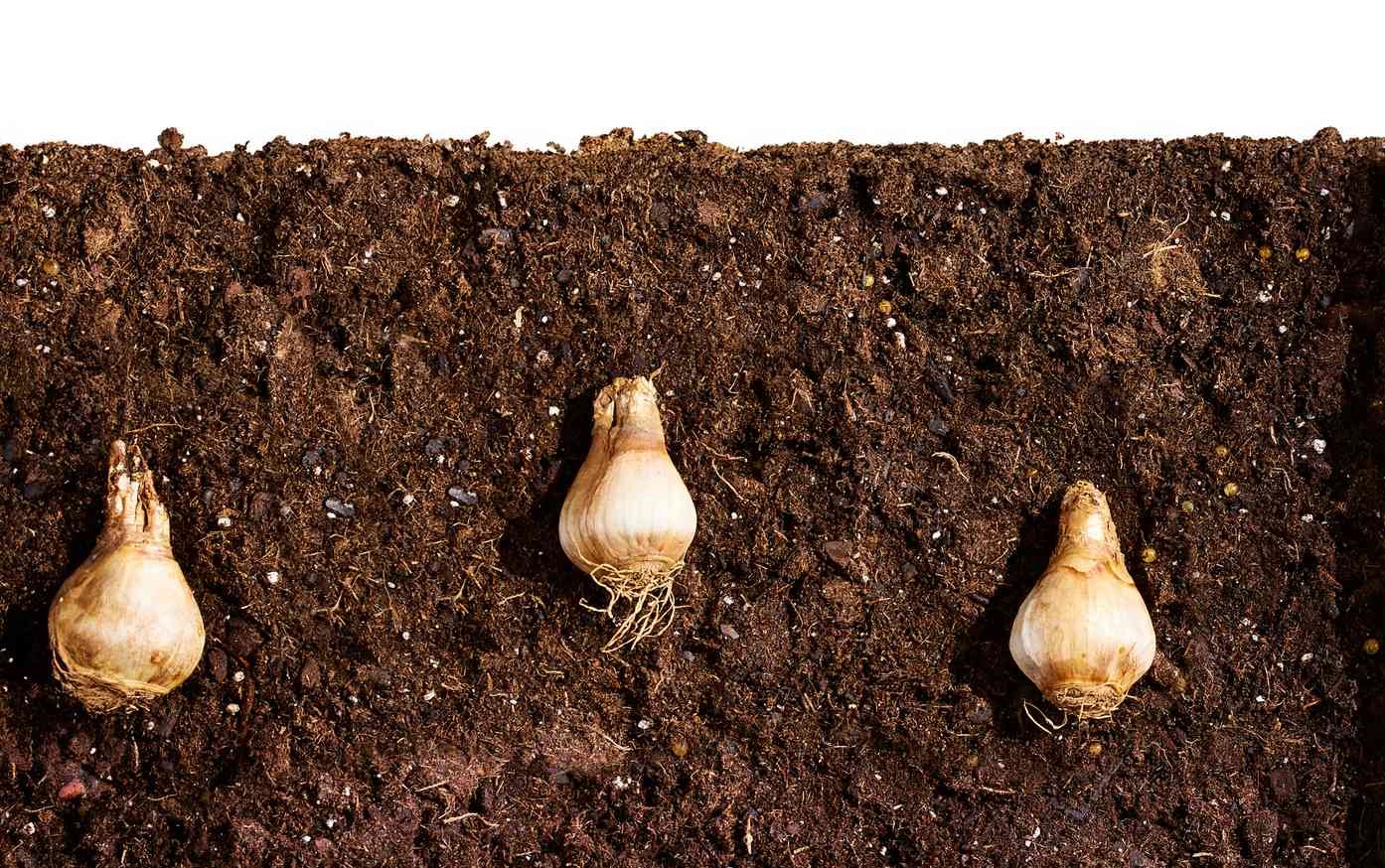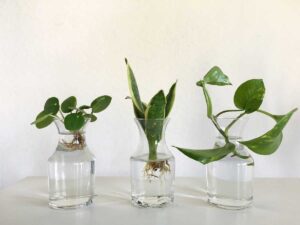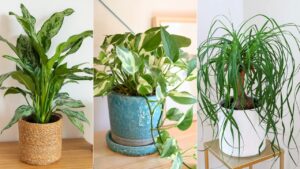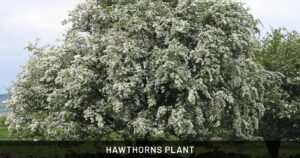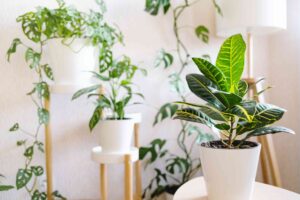How To Plant Daffodil Bulbs: The Complete Guide
There’s something magical about the first daffodils of spring. Their cheerful yellow blooms signal the end of winter and bring hope with their resilient nature, often pushing through the last patches of snow to announce a new growing season. If you’re looking to add these delightful harbingers of spring to your garden, you’ve come to the right place. This comprehensive guide will walk you through everything you need to know about planting daffodil bulbs for stunning spring displays.
Understanding Daffodils: Nature’s Spring Messengers
Daffodils, known botanically as Narcissus, are perennial flowering plants that grow from bulbs. They belong to the Amaryllidaceae family and are native to meadows and woods in Europe, North Africa, and Asia. These iconic spring flowers have become naturalized throughout North America and are especially beloved for their reliability, longevity, and resistance to deer and other garden pests.
According to the United States Department of Agriculture (USDA), daffodils are hardy in zones 3-9, making them suitable for most of the continental United States. The USDA Plant Hardiness Zone Map can help you determine your specific zone and select the most appropriate daffodil varieties for your region: USDA Plant Hardiness Zone Map.
Daffodils come in a variety of shapes, sizes, and colors. While yellow is the most recognized color, they also come in white, orange, pink, and even combinations of these colors. The American Daffodil Society recognizes 13 distinct divisions of daffodils based on their flower forms, but for the home gardener, the journey begins with understanding how to plant these beloved bulbs properly.

When to Plant Daffodil Bulbs
Timing is everything when it comes to planting daffodil bulbs. Unlike many garden tasks that are best performed in spring, daffodil bulbs should be planted in fall. This gives them time to establish strong root systems before the cold winter months and ensures they’ll be ready to burst into bloom when spring arrives.
The ideal planting time varies depending on your climate zone, but a good rule of thumb is to plant daffodil bulbs when soil temperatures fall below 60°F (15.5°C). This typically occurs about 2-4 weeks before the ground freezes in your area. In most of the United States, this translates to the following timeline:
Regional Daffodil Planting Timeline
| US Region | Optimal Planting Time | Soil Temperature |
|---|---|---|
| Northern states (Zones 3-5) | September to early October | Below 60°F (15.5°C) |
| Mid-Atlantic/Midwest (Zones 5-7) | October to early November | Below 60°F (15.5°C) |
| Southern states (Zones 7-9) | November to December | Below 60°F (15.5°C) |
| Warm climates (Zones 9-10) | Pre-chilled bulbs in December | Below A60°F (15.5°C) |
If you live in a very warm climate (USDA zones 9-10), you’ll need to take extra steps to ensure success. Daffodils require a period of cold dormancy to bloom properly. In these warmer regions, you can either purchase pre-chilled bulbs or chill them yourself in the refrigerator for 8-10 weeks before planting. Just be sure to keep them away from fruits, which release ethylene gas that can damage the flower embryos inside the bulbs.
According to the National Gardening Association, a division of the United States Department of Agriculture, “Planting too early can lead to premature top growth that may be damaged by winter cold, while planting too late may not allow enough time for adequate root development before the ground freezes.” You can find more information about timing and regional considerations on the USDA’s Agricultural Research Service website: USDA-ARS Flower Bulb Research Program.
Selecting Quality Daffodil Bulbs
Not all daffodil bulbs are created equal, and selecting high-quality bulbs is crucial for successful blooming. When shopping for daffodil bulbs, keep these considerations in mind:
Size Matters
Larger bulbs generally produce larger and more numerous flowers. Look for bulbs that feel firm and heavy for their size, with no signs of mold, soft spots, or damage. Premium-quality daffodil bulbs should be at least 12 cm in circumference for standard varieties, though this varies by cultivar. Smaller varieties naturally have smaller bulbs.
Variety Selection
With thousands of registered daffodil cultivars available, selecting the right varieties for your garden can seem overwhelming. Consider these factors when making your choice:
Bloom Time: Different daffodil varieties bloom at different times. By selecting a mix of early, mid-season, and late-blooming varieties, you can extend your daffodil display for up to 8 weeks.
Height: Daffodils range from miniature varieties (under 8 inches) to standard heights (12-16 inches) to tall varieties (18+ inches). Consider where you’ll be planting them and how their height will complement surrounding plants.
Appearance: Beyond the classic yellow trumpet daffodils, consider trying varieties with different cup shapes, colors, and forms to create visual interest in your garden.
Naturalization: If you’re looking to establish daffodils that will multiply and spread over time, choose varieties known for good naturalization, such as ‘Carlton’, ‘Ice Follies’, or ‘Tete-a-Tete’.
The National Park Service, which maintains historic gardens at many sites throughout the United States, recommends selecting a mix of heirloom and modern varieties for the best combination of classic charm and disease resistance. Their plant conservation program provides valuable information about preserving historic plant varieties, including daffodils: NPS Plant Conservation.
Preparing Your Planting Site
Daffodils are remarkably adaptable but will perform best when planted in suitable conditions. Taking time to prepare your planting site properly will reward you with healthier plants and more abundant blooms for years to come.
Soil Requirements
Daffodils prefer well-draining soil with a neutral to slightly acidic pH (6.0-7.0). Heavy clay soils can cause bulbs to rot, while sandy soils may not provide enough nutrients. Regardless of your soil type, you can improve it by incorporating organic matter such as compost or well-rotted manure.
To determine your soil’s pH and nutrient levels, consider getting a soil test through your local extension office. The Cooperative Extension System, a nationwide education network backed by the USDA, offers affordable soil testing services and can provide recommendations specific to your area: USDA Cooperative Extension System.
Sunlight Conditions
Daffodils bloom best when planted in locations that receive full sun to partial shade. Full sun is ideal (6+ hours of direct sunlight), but daffodils can tolerate partial shade, especially in warmer regions where afternoon shade may be beneficial. In deciduous woodland areas, daffodils take advantage of the early spring sunlight before the trees leaf out, making them excellent for naturalizing in these settings.
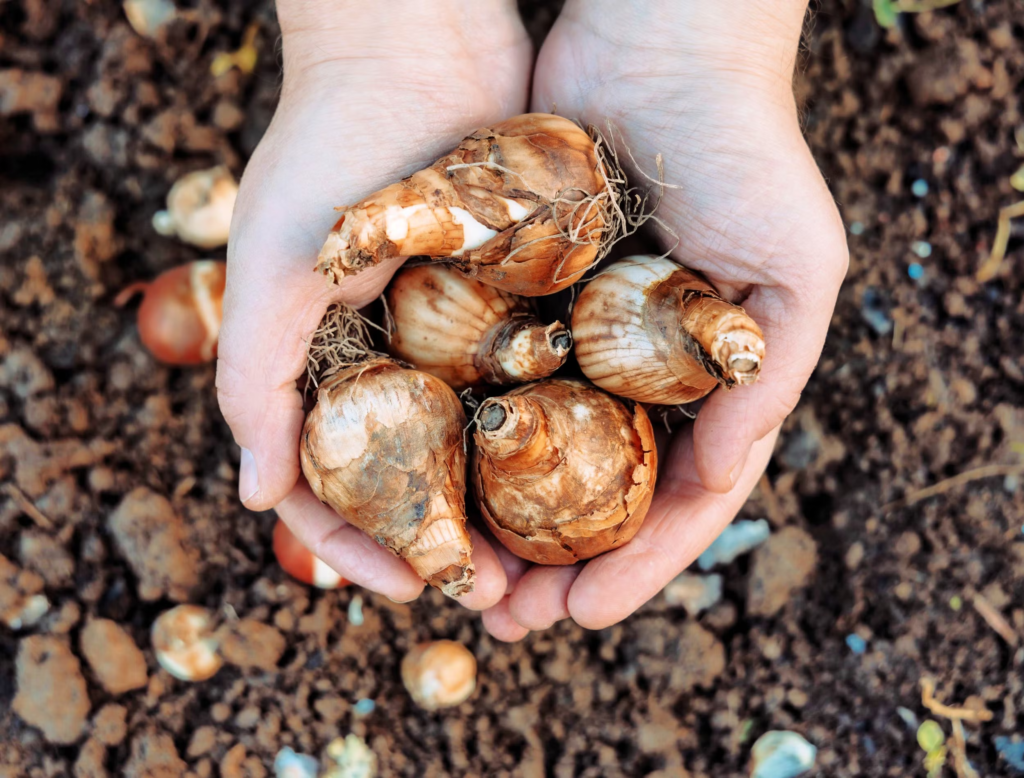
Drainage Considerations
Proper drainage is critical for daffodil success. These bulbs will rot if left in waterlogged soil. If your planting area has poor drainage, consider creating raised beds or mounds to improve drainage. Alternatively, you can incorporate coarse sand or fine gravel into heavy soils to increase porosity.
According to the United States Environmental Protection Agency (EPA), good drainage not only benefits your plants but also helps manage stormwater runoff and reduces erosion. Their GreenScapes program provides guidance on environmentally friendly landscaping practices that improve soil health and drainage: EPA GreenScapes.
Step-by-Step Planting Instructions
Now that you’ve selected quality bulbs and prepared your site, it’s time to plant your daffodil bulbs. Follow these detailed steps for the best results:
Spacing and Depth Guidelines
The correct planting depth and spacing are crucial for daffodil success. As a general rule, plant daffodil bulbs at a depth of 2-3 times the height of the bulb. For most standard varieties, this means planting 6-8 inches deep, measured from the base of the bulb.
Space bulbs according to your desired effect:
- For a dramatic, concentrated display: Plant bulbs 3-4 inches apart
- For a more naturalized look: Plant bulbs 6-8 inches apart
- For planting between perennials: Space bulbs 8-12 inches apart
When planting in groups or drifts, which generally looks more natural than planting in straight rows, aim for odd-numbered groupings (5, 7, 9 bulbs) for the most pleasing aesthetic effect.
Planting Techniques
You have several options for planting daffodil bulbs:
Individual Planting: Dig individual holes for each bulb or small group of bulbs. This method works well for adding daffodils to existing garden beds or for planting showcase varieties.
Trench Planting: Dig a trench to the appropriate depth, place bulbs along the bottom of the trench with the pointed end facing up, and then refill with soil. This method is efficient for planting larger quantities in a new area.
Naturalized Planting: For a naturalized look in lawns or woodland areas, use a bulb planter or garden trowel to dig individual holes. Scatter bulbs across the area first to achieve a random, natural-looking pattern.
Regardless of your chosen method, always plant daffodil bulbs with the pointed end up and the root plate down. If you’re unsure which end is which, plant the bulb on its side—it will find its way up as it grows.
After placing the bulbs, cover them with soil and water thoroughly to settle the soil around the bulbs and initiate root growth. According to the United States Geological Survey (USGS), proper initial watering helps establish the soil-to-bulb contact needed for optimal root development: USGS Water Science School.
Planting in Containers
Daffodils can also thrive in containers, making them accessible for gardeners with limited space or poor soil conditions. Here’s how to plant daffodils in containers:
- Select a container at least 8-10 inches deep with drainage holes.
- Use a high-quality potting mix rather than garden soil. Optionally, add a layer of gravel at the bottom for improved drainage.
- Plant bulbs more densely than you would in the ground, spacing them just 1-2 inches apart for a fuller display.
- Plant at the same depth as you would in the ground, approximately 6 inches deep.
- Water thoroughly after planting.
- In colder regions (zones 3-6), protect potted bulbs from freezing by placing containers in an unheated garage or against a house foundation and covering with straw or leaves.
The United States Botanic Garden offers extensive information on container gardening, including tips specific to bulbs like daffodils: United States Botanic Garden.
After-Planting Care
Your work isn’t quite done after planting daffodil bulbs. Proper care during the dormant period and after blooming will ensure years of beautiful displays.
Winter Care
In most regions, daffodil bulbs need minimal winter care. The soil and any snow cover provide insulation against extreme cold. In areas with harsh winters, a 2-3 inch layer of mulch applied after the ground freezes can provide additional protection. Use straw, pine needles, or shredded leaves, and remove the mulch as soon as growth appears in spring.

Spring Bloom Care
When your daffodils bloom in spring, you can extend their display by keeping them watered during dry spells and deadheading spent flowers. To deadhead, simply pinch or cut off the flower head and developing seed pod (the swollen area behind the flower), but leave the foliage intact.
After flowering, daffodils enter a critical period where they store energy for next year’s bloom. During this time:
- Continue watering daffodils for at least 6 weeks after flowering if rainfall is inadequate.
- Apply a low-nitrogen, high-potassium fertilizer after flowering to support bulb development.
- Allow foliage to yellow and die back naturally—this typically takes 6-8 weeks. Resist the urge to cut back or tie up the foliage during this time, as the leaves are photosynthesizing and sending energy back to the bulb.
The USDA’s Agricultural Research Service provides extensive research on the post-bloom needs of spring-flowering bulbs: USDA-ARS Horticulture Research Laboratory.
Dividing and Transplanting
Over time, daffodil bulbs will multiply, forming clumps that may eventually become crowded and produce fewer flowers. When this happens, typically every 3-5 years, it’s time to divide and transplant them:
- Wait until the foliage has completely died back, usually 6-8 weeks after flowering.
- Carefully dig up the clumps, being mindful not to damage the bulbs.
- Gently separate the bulbs, removing any small offsets (baby bulbs) from the parent bulbs.
- Replant immediately at the proper depth and spacing, or store in a cool, dry place until fall planting time.
Companion Planting with Daffodils
Daffodils not only shine on their own but also pair beautifully with other plants. Strategic companion planting can extend your garden’s seasonal interest and address the issue of daffodil foliage during its die-back period.
Compatible Companions
Consider these companion plants for your daffodils:
Spring-Flowering Bulbs: Combine daffodils with other spring bulbs that bloom at different times, such as snowdrops (earlier) or tulips (same time or later).
Perennials: Plant daffodils among perennials that emerge later in spring, such as hostas, daylilies, or coral bells. As the daffodil foliage yellows, the emerging perennials will mask the untidy appearance.
Groundcovers: Low-growing plants like creeping phlox, ajuga, or vinca minor provide beautiful ground coverage between daffodil stems.
Flowering Shrubs: Plant daffodils beneath spring-flowering shrubs like forsythia or azaleas for a layered effect.
Companion Planting Benefits
| Companion Plant | Blooming Time | Benefits |
|---|---|---|
| Snowdrops | Very early spring | Extends the bulb season; contrasts with later daffodils |
| Muscari (Grape Hyacinth) | Mid-spring | Purple-blue color complements yellow daffodils |
| Creeping Phlox | Mid to late spring | Covers ground as daffodils fade; adds pink/purple color |
| Hostas | Late spring foliage | Emerges as daffodil foliage fades; hides yellowing leaves |
| Daylilies | Summer | Foliage emerges as daffodils fade; continues garden interest |
| Ornamental Grasses | Summer-fall interest | Provide structure; compatible with daffodil growing needs |
The USDA Natural Resources Conservation Service provides valuable information on companion planting and native plant combinations that work well with naturalized daffodils: USDA-NRCS Plant Materials Program.
Troubleshooting Common Daffodil Problems
Even with proper planting and care, you may occasionally encounter issues with your daffodils. Here are solutions to common problems:
Pests and Diseases
Daffodils are largely pest-resistant thanks to the toxic compounds in their tissues, but they can occasionally face challenges:
Bulb Rot: This fungal disease occurs in poorly-drained soils. Prevention is key—ensure good drainage and avoid planting in areas where water collects. If rot occurs, remove and destroy affected bulbs.
Narcissus Fly: These pests resemble small bumblebees and lay eggs in or near bulbs. The resulting larvae eat the bulbs from within. If you notice damaged bulbs, remove and destroy them. Covering newly planted areas with floating row cover until growth emerges can prevent egg-laying.
Basal Rot: This fungal disease causes bulbs to develop soft, brown spots. Plant resistant varieties and ensure good drainage to prevent infection.
The USDA’s National Institute of Food and Agriculture provides resources for identifying and managing garden pests and diseases: USDA-NIFA Integrated Pest Management Program.
Blooming Problems
If your daffodils fail to bloom or produce smaller flowers than expected, consider these common causes:
Insufficient Light: Daffodils need at least 6 hours of sun when in growth. If trees have grown and created too much shade, consider transplanting to a sunnier location.
Improper Planting Depth: Bulbs planted too shallowly may not bloom well and are more susceptible to temperature fluctuations. Bulbs that work themselves to the surface should be replanted at the proper depth.
Cutting Foliage Too Early: Removing foliage before it yellows naturally prevents the bulb from storing energy for next year’s bloom. Always allow foliage to die back completely.
Overcrowding: After several years, daffodil clumps can become too dense, resulting in smaller or fewer flowers. Divide crowded clumps and replant.
Nutrient Deficiency: Daffodils benefit from a low-nitrogen, high-potassium fertilizer applied after flowering. Avoid high-nitrogen fertilizers, which promote foliage growth at the expense of flowers.

Daffodils Beyond the Garden
The joy of daffodils extends beyond their place in the garden. Here are some additional ways to enjoy these cheerful spring bloomers:
Cut Flowers
Daffodils make excellent cut flowers, lasting up to a week in a vase. For the best vase life:
- Cut stems when the buds are still partially closed but showing color.
- Cut at an angle with a sharp knife or scissors.
- Place stems in warm water immediately.
- Allow daffodils to stand alone in water for at least 4-6 hours before combining with other flowers, as their sap can shorten the vase life of other blooms.
- Change the water every 2-3 days to extend vase life.
Daffodils for Special Purposes
Beyond traditional garden plantings, consider these special uses for daffodils:
Woodland Naturalization: Many daffodil varieties, especially the smaller or species types, naturalize beautifully in woodland settings, creating stunning spring displays year after year with minimal care.
Erosion Control: When planted on slopes, daffodil bulbs and their developing root systems can help prevent soil erosion. The United States Department of Agriculture’s Natural Resources Conservation Service recommends bulbs as part of their erosion control strategies: USDA-NRCS Conservation Practices.
Memory Gardens: Daffodils are traditional symbols of remembrance and hope, making them perfect additions to memorial gardens. The American Public Gardens Association provides resources for creating meaningful garden spaces: American Public Gardens Association.
Community Projects: Consider participating in or initiating a community daffodil planting project. The National Park Service’s “Plant for the Planet” program encourages community involvement in public planting projects: NPS Plant Conservation Programs.
Conclusion: Investing in Years of Spring Beauty
Planting daffodil bulbs is more than just a fall gardening activity—it’s an investment in years of spring beauty. With proper planting and minimal care, daffodils will return reliably each spring, often for decades, dividing and multiplying to create ever-larger displays.
Whether you’re planting a few bulbs in containers, creating dramatic drifts in your perennial borders, or naturalizing thousands in a woodland setting, the basic principles remain the same: plant quality bulbs at the right depth, in the right location, at the right time. The golden rewards that emerge each spring will confirm that your efforts were worthwhile.
As you admire your daffodils each spring, take notes on which varieties perform best in your specific growing conditions. This information will guide your future bulb purchases and help you create a daffodil collection perfectly suited to your garden.
Remember the words attributed to the beloved American poet Ralph Waldo Emerson: “The earth laughs in flowers.” With daffodils in your garden, you’ll be treated to one of spring’s most joyful laughs year after year.
For more detailed information on specific daffodil varieties and specialized growing techniques, consult the American Daffodil Society or your local Cooperative Extension office, a resource provided by the United States Department of Agriculture’s National Institute of Food and Agriculture: USDA Cooperative Extension System Offices.
